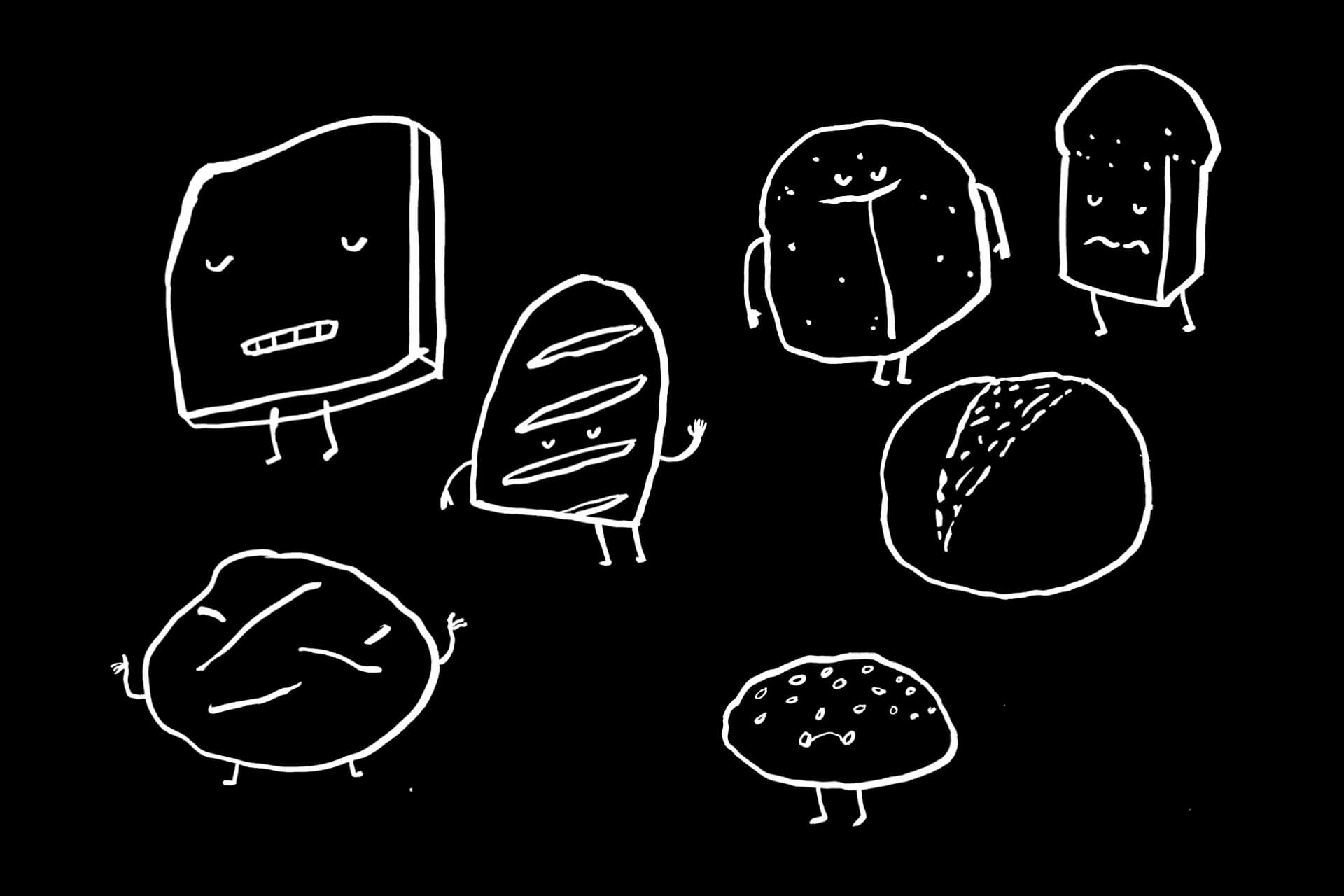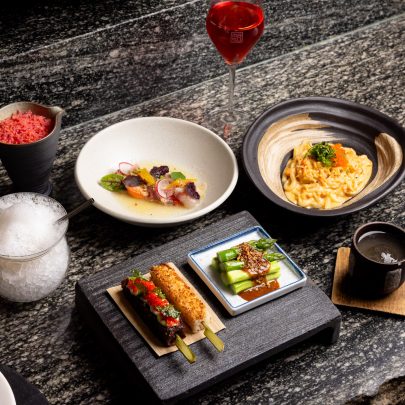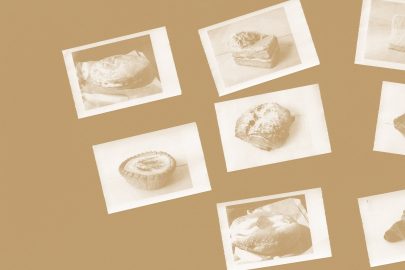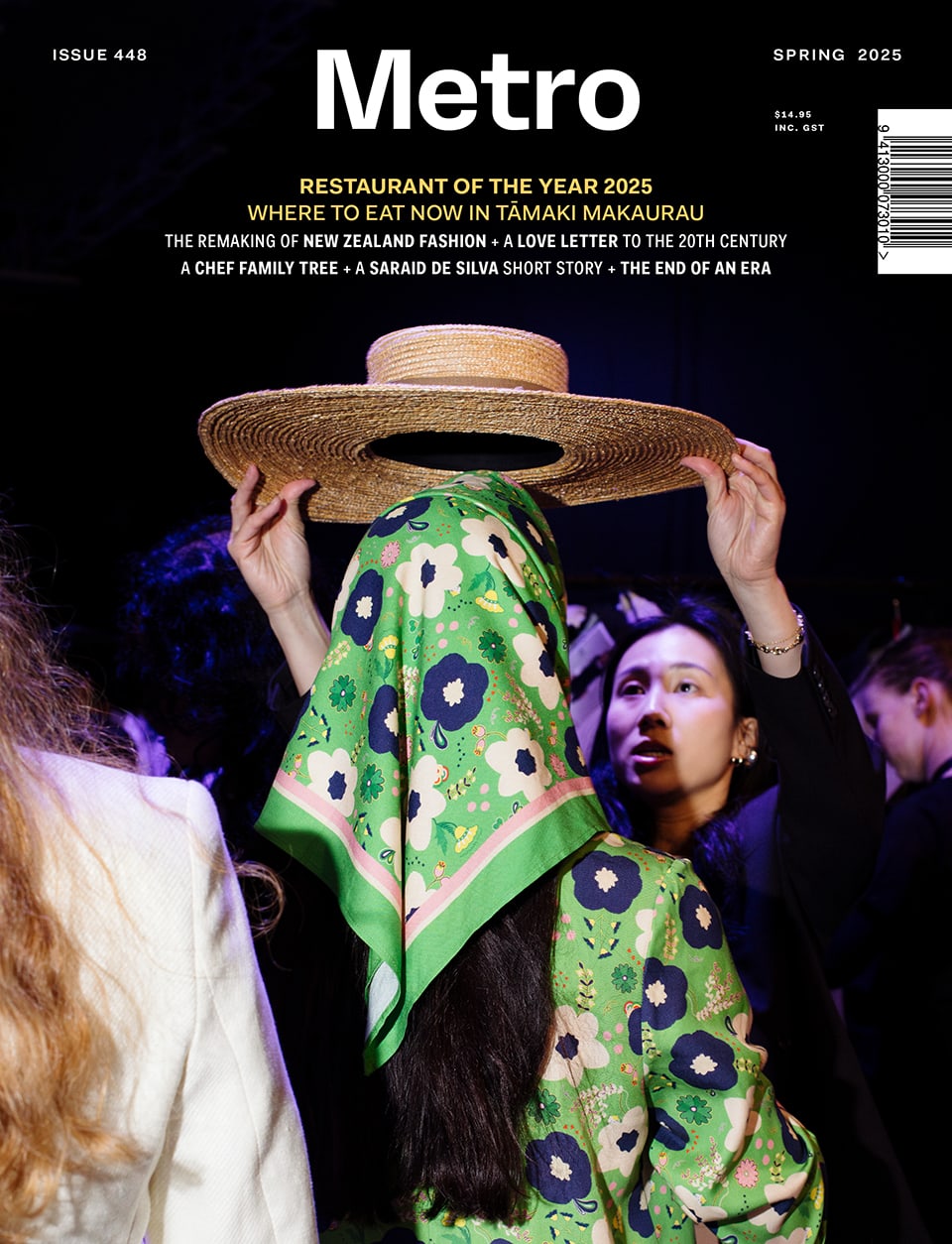Oct 14, 2022 Food
Gun to my head, I’d probably say that my favourite bread in the world is a KFC dinner roll. In my imagination, the seeded bun, with its bell-curve arch and browned top, has ascended to the top of the bread pyramid, sweetly flapping its wings above all others. Warm, fluffy perfection. This may be because the KFC dinner roll is like the ultimate evolution of the kinds of breads that I grew up eating at home — light, white, and with little consideration of nutrition. To this day, I could bring a loaf of the best sourdough bread in Auckland to my family house, and my parents would turn their nose up at it and say, “It’s just not my kind of bread.” (Note: this exact scenario happened.)
So this is a tribute to that sentiment: your kind of bread may not be someone else’s kind of bread, but that’s the beauty of the big bread umbrella.
Here are just (a few) of the ways that you and I eat bread differently.
— Jean
–
PAN DE SAL
Jess Granada
Jess Granada describes pan de sal as a sort of “mum bread” — it takes so little time to make that anyone can do it. Pan de sal, which is literally translated as “salt bread”, is a product of Spain’s colonisation in the Philippines (some say Portuguese), traditionally cooked in a pugon (woodfired oven). At its core, it’s a soft, slightly sweet yeasted bread roll, covered in crumbs, made all hot and smoky from the oven and usually eaten at breakfast. Granada associates pan de sal with memories of her lola (grandmother), who owned a small eatery in Manila and inspired her to cook, and the smell which would waft out from the bakeries in the morning. “Lola Alice always made sure we had a bag of pan de sal in the morning. We’d eat it plain, or simply with cheese whiz or some sweet peanut butter.”
A daily bread for people in the Philippines, men would line their bicycle baskets with hessian sacks before piling up their wares, boulders of pan de sal, and taking them out from the city centre. “I still remember sitting on our balcony at 4am waiting for the man with a basket full of pan de sal, blowing a small horn and shouting, ‘Pan de sal! Pan de sal kayo diyan!’ over and over again. The smell and taste is fresh in my mind.”
Ingredients
— 2 cups (270g) all-purpose flour
— 2 cups (260g) bread flour
— 1/4 cup (55g) white granulated sugar
— 25g fresh yeast, crumbled, or 3 tbsp of dry yeast — 1 tsp baking powder
— 2 tsp salt
— 11⁄4 cup (310ml) whole milk, warm (110–120 F)
— 1 medium egg, room temperature
— 6 tbsp (90ml) vegetable oil
— 1/2 cup breadcrumbs
1. Put your fresh yeast in the warm milk and let it bloom for 15 mins, adding half of the sugar.
2. In the bowl, put all the dry ingredients and add all the wet ingredients slowly using a dough hook attachment, turn on the mixer starting from the lowest speed. Increase the speed after a minute or so.
3. Knead the dough until smooth and elastic, or if the dough detaches from the sides of the bowl and forms a ball. The time of kneading varies from dough to dough, but aim to get a smooth texture. When the dough is ready, form it into a ball. Transfer the dough to a lightly greased bowl and brush the top of the dough with oil. Cover the bowl with cling film and keep in a warm place to rise for one hour or until doubled in size.
4. After the dough has doubled in size, transfer it to a lightly floured surface and lightly push it down just to remove the air.
5. Line your tray with baking paper and dust it with a generous amount of breadcrumbs.
6. Form a log about 3 inches in diameter. And use a wooden dough cutter to form a “singkit” shape, or narrow-eyed shape bread. Normally about 50g each, or about 20–22pcs of bread.
7. After portioning, roll your pan de sal in the breadcrumbs straight to the tray. Cover with a damp towel and let them rise again for about 45 minutes to 1 hour or until doubled in size.
8. Meanwhile, make sure to preheat your oven to 375 F. When doubled in size, bake them in a preheated oven at 375 F for 15 minutes or until the top is brown and has a crusty outside but soft on the inside.
9. Let the pan de sal rest for about 10 minutes before enjoying.
Jess Granada is the head chef of Nanam .
–
FA’APAPA
Lana Lopesi
My papa was the fa‘apapa baker in our family. Like many men of his generation, he was the superior household cook. He had a recipe which no one else knew and went with him to the grave. For a long time, every fa‘apapa I ate came up short, with a gooey texture and not enough sugar; his fa‘apapa, with its hints of coconut and crunchy edges, was only a fading memory. That was until very recently, when a friend’s mum saved me from my fa‘apapa woes and shared her recipe which tasted exactly how I remember our family’s fa‘apapa to taste.
Best — albeit inaccurately — described as a coconut bread, fa‘apapa is the bread of Samoan champions. It’s more of a batter than a dough that you slop on to sections of tin foil and wrap into parcels which are baked in the oven. Raising agent? Forget about it. Instead, it’s made with flour, coconut cream, sugar and — personal suggestion — a couple of ripe bananas. You know it’s ready when a metal butter knife is bounced onto the parcel, making a distinct dull noise. Ten points if you get the edges crunchy but not burnt (the best part IMO). The result is a sweet parcel of dense coconut, banana goodness. Fa‘apapa is best served fresh from the oven, thinly sliced with a generous serving of butter.
You can’t judge fa‘apapa by how it looks, which is not pretty (to say the least). And if you leave it too long, it will even fortify and become strong enough to break a window. Some might call that multipurpose. She’s a humble one for sure, but if you know the sweet coconut taste, then you know.
Recipe by Mary Thomsen
Makes 4 fa‘apapa parcels
Ingredients
— 3 cups of plain flour
— 1/2 cup of sugar (adjust to taste) — 2 cups of shredded coconut
— 1 can of coconut cream
Method
1. Preheat the oven to 180 degrees.
2. Mix all the ingredients together in a bowl. It is a medium-wet dough so use as much coconut cream as you need to achieve the desired consistency. If you want to, you can add in a mashed banana or another kind of mashed fruit for flavour here. But make sure you add a little more flour to balance the consistency.
3. Cut tinfoil into four squares, these will be used to make parcels so it needs to be big enough to fold completely covering the dough. Butter the tinfoil and separate the dough four ways. Place it onto the tinfoil, and wrap them into parcels.
4. Bake in the oven for approximately 45 minutes. You know it’s ready when the parcel feels hard. If you need to, take a peek and check the fa‘apapa has browned. I like to cook it a little longer so that the edges are crispy.
5. Unwrap the parcel and enjoy! Great served fresh from the oven with butter.
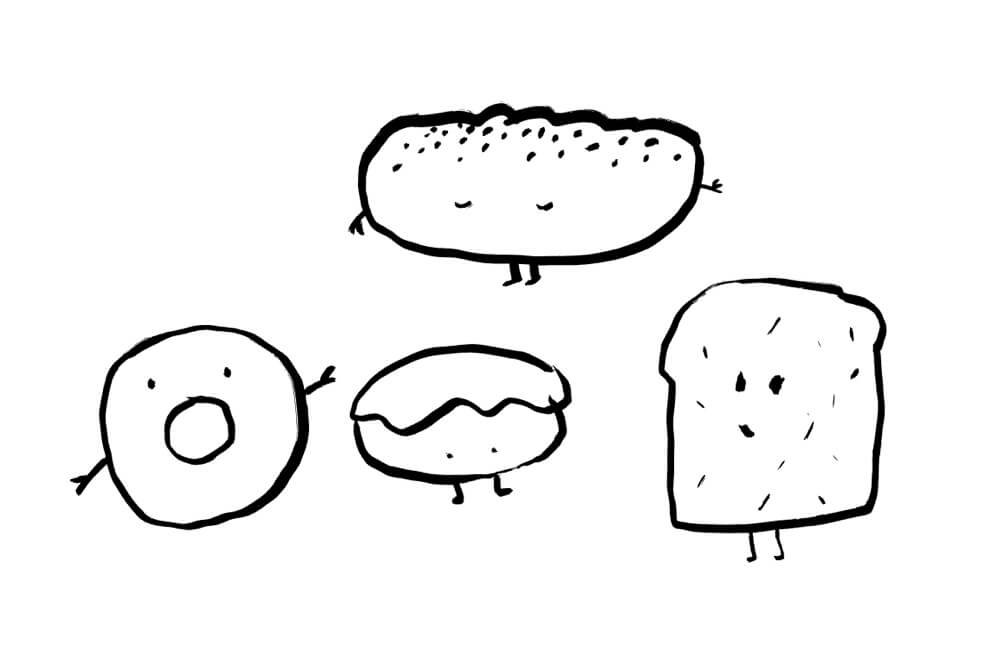
INJERA
Yeshi Desta
It’s the smell of injera that hits you first: a spiced, hot waft that rises up from the quickly cooking dough-batter spread thinly on the mitad, a flat, wide griddle. Yeshi Desta, the chef and operator behind pop-up series My Mother’s Kitchen, says that injera is the “key”, a central player in all the feasts she holds and invites guests to. Injera, which is a sour, spongy flatbread from Ethiopia,
is made using teft flour, so it’s naturally gluten-free and vegan. (Desta describes it, semi-jokingly, as “bread with a twist”.) It’s fermented for about 3 to 5 days, depending on the weather, and after it gets cooked on the mitad, used to scoop up all sorts of stews and sides. “My brother used to say, ‘If I ever leave Ethiopia, I’m going to put injera in my pocket’,” Desta laughs. Desta encourages her guests to use their hands when eating Ethiopian food, the injera acting as the spoon. We eat it with “everything”, Desta says — for breakfast, they may just melt some spiced butter on top and eat it as it is. Though Desta never considered herself a chef, it was the simple fact that she missed her mum’s food that drew her to cooking, using all her mum’s recipes which are “all in my head”.
Yeshi Desta is the founder and chef of Ethiopian pop-up series My Mother’s Kitchen.
@my.mothers.kitchen
–
SHOU TOU BAO
Shan James
The most traditional type of Chinese bread is not baked, but is steamed to a pillowy whiteness. This means there is no crust or crunch, and the finely milled low-gluten flour it is typically made from provides little flavour. These things combine to make it the perfect neutral envelope for all sorts of sweet and savoury fillings — custard, sweet bean paste, chicken or barbecue pork.
The version of steamed bun that stands out most in my childhood memory is one that appeared only a few times each year at the birthday celebrations of my elderly relatives. Usually presented at the end of a birthday meal or banquet, ‘shou tou bao’ or ‘longevity peach bao’ are small steamed buns formed into the shape of a peach — which symbolises longevity in Chinese culture — and filled with sweet lotus or red bean paste. The top of each bun is sprayed with a delicate blush of pink to emulate the ripeness of a peach. I found them very beautiful, and the theatre of ooohs and aaahs from everyone gathered around when they were presented made them seem even more special. Although everyone present at the celebration can enjoy shou tou bao, they are only appropriate to serve if the birthday is that of an older person. They express respect and love, and wish the recipient continuing health and strength. I can’t think of any parallel in Western cuisine, and this, to me, illustrates a general difference in cultural attitudes towards ageing and the aged. I think I’d better make some for my mum’s next birthday.
Shan James is a partner in design studio Practise and the cook behind instagram account @15kitchens.
–
SODA BREAD
Ashleigh Payne
For two large periods of my youth, Mum and I shared a home with my aunt and uncle. In the first house, we had
a guest room frequently filled with my uncle’s siblings visiting from Ireland. Later, in a different house, the other room was instead filled with my cousins. One constant through each new home and every family member’s presence was the weekend’s fry-up breakfast, and central to it, my uncle’s homemade soda bread.
Soda bread bookends these meals. It was the first thing cooking, filling the house with that freshly baked bread aroma real estate agents dream of. When you’re at the table, it is the first thing you eat, slathered heartily with salty butter, and the last thing you eat, too, mopping up baked beans spiced with curry powder. I sometimes have another piece after that, with jam, because I am never too full for more bread.
Bread is one of those foods that brings comfort. Through the pandemic I’ve needed this comfort, but I’ve also not had the bandwidth for a multiple-day sourdough affair, a weekly habit in which I used to partake. I did make brioche twice, because if it’s a project then I can get on board. (I learnt I still don’t like brioche.) Next, I tried the four ingredient no-knead artisan bread that floated around the internet for a spell. It was fine, it was bread, it was good with butter.
But it didn’t fill that gap.
Soda bread is a type of ‘quick bread’. What sets quick breads apart from other breads is that they are made with chemical leaveners like baking powder or baking soda, rather than biological ones such as yeast. They are much easier to make on short notice; they are more reliable, as they don’t depend on environmental factors like yeast does; and they take a lot less time since they don’t require proofing. They’re convenient and ingredients are affordable — this is how soda bread came to be made in Ireland, gaining popularity due to necessity during a time of poverty following the Great Famine.
In a bid to ward off malaise as well as a growing, missing- my-loved-ones homesickness developed after a year of restrictions and having no car, I set out to bake soda bread. Baking this bread brings me to my family home while I’m in my own kitchen. On 16 March, I texted my uncle to ask for his recipe (“It’s not really a recipe,” he says). Here it is, verbatim:
Ingredients
— 4 cups of flour
— 50 gram butter
— 1 teaspoon of salt
— 1 teaspoon of soda powder — 1 to 1.5 cups of butter milk
Method
1. Mix all the dry together mix butter in to a bread crumbs add the butter milk if too dry add more don’t need too much stick in oven at 180 ish for 35 min knock bottom hollow you know the drill
I kind of know the drill. I’m not an expert on anything at all, and that this recipe came from someone who clearly knows what they’re doing when it comes to soda bread threw me for a little loop. It didn’t look like any of mine: carefully written out with meandering explanatory notes about what a mixture should look and feel like. What it should smell like, taste like, what kind of flour you use, what kind of butter, what kind of salt. After furiously searching for tips online (unhelpful — regional conversations are annoying), I decided to go with my gut. My loaves were a little denser than I would have liked, maybe not quite done in the middle. But they made me happy, mostly.
Ashleigh Payne is a chef and baker.
–
Hieu Tran
We joke, but for the longest time my fiancée used to say she was only with me to get access to my dad’s bread. In all seriousness though, bread is something that helped sustain our family, since it was the main source of income for my refugee immigrant parents. So bread played a significant role in my life, in that it has also provided us opportunities. And on the other side, it is also a reminder of how hard my parents had to work — all the late, long hours. Which also meant that I didn’t get to have a lot of time with them growing up, which I think a lot of kids with immigrant backgrounds might have also experienced.
I remember the smell of flour. We used to have a bakery in Hamilton and I would have been around seven years old. Every morning at 4am I would get ready to go to school and leave with my mum to head to the bakery (Mum started later than my dad as they couldn’t leave me home alone). I was always half asleep by the time I got to the bakery, so then I would fold out this bed that was in the storage room stocked with bags of flour and get a few more hours of sleep before school. So I would always remember waking up to the smell of flour — and it probably didn’t help having flour all over my uniform too.
The first thing that comes to my mind when I think about bread is basically dipping bread in soy sauce. I absolutely love cooking up some extra crispy fried eggs, you know with the sides all puffed up, douse it in some soy sauce and then grabbing a banh mi, ripping it apart and dipping it in the yolk.
My dad is obsessed with dipping his sourdough in macadamia oil and soy sauce, but not just any soy sauce. He would remind you that it’s Maggi seasoning and has to be made in Switzerland. Another family favourite is getting banh mi and filling it with bi heo (shredded pork skin) and spreading some of Mum’s nuoc mam dressing.
Hieu Tran is the son of Dieu and Trinh Tran, the current owners of Mr T’s Baked Goods & Eatery in Onehunga.
–
HOPPERS
Chamanthie Sinhalage-Fonseka
In high school, I studied French and Japanese — two very different languages — but what stood out to me was that both languages essentially had the same word for bread: pain in French and pan in Japanese.
The reason this sticks in my mind now is because the word for bread (in the Western sense) in Sinhalese (one of the main languages of Sri Lanka, which is where I was born) is paan and I remember finding it curious that three such different languages could share the same word for the same thing.
I would normally have described hoppers to be more like a pancake, and not bread — my very Western mind leaning towards bread being floury, watery, leavened/risen things. But I discovered that pancakes can be considered a “batter bread”, and is one of the original types of quick, flatbreads.
Hoppers are extremely exciting to anyone who is from Sri Lanka or has been to Sri Lanka. These delicate bowl- shaped pancakes require a level of practice and precision to make perfectly, and they are definitely considered a special occasion food. You have to eat them hot and freshly-made for maximum effect.
Whether you have them plain or with an egg in the middle, it’s important to have an array of sambols on the side. Add a banana on the side too and you’ve got the best meal you’ll have all year.
I left Sri Lanka at age one, but one of my enduring memories is going back to Sri Lanka every few summers and arriving home at some ungodly early-in-the-morning hour (in fact, as a kid I had no idea that planes could land in the country in broad daylight), and my grandmother would have fresh hoppers, a curry, sambols and bananas ready. It didn’t matter that it was 4am. It was the taste of welcome home.
In Auckland, if you’re after hoppers, you can get a hopper person to come to your actual house! Sri Lankans in New Zealand have the loveliest hopper garden parties, where you and your friends relax with your beverages of choice (an arrack, if you can get your hands on any, is perfect), while the hopper person fires up their burners and starts making and serving them up freshly made.
I have never met a single person who doesn’t love a hopper. In fact, it’s the number-one thing that anyone who has been to Sri Lanka, like ever, reminisces about for decades after.

